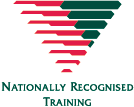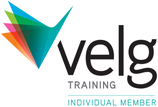In our fast-paced business world, meetings have become an integral part of the workflow. BUT while meetings can be powerful tools for collaboration, they are often plagued by distractions, tangents, and lack of direction, leading to wasted time and reduced productivity. I have a habit of counting up the wage cost of those in the room to highlight the cost of our meeting – to justify that cost we ned value for our time there. To make the most out of your meetings, it’s essential to keep them focused. In this blog, we will explore some practical strategies to ensure your meetings stay on track, achieve their objectives, and drive meaningful outcomes.
How do we prepare for a meeting?
1. How do we focus a meeting?
Setting clear objectives is the first step in creating a focussed meeting. Ask yourself ‘Why am I organising this meeting?’ and ‘What do you aim to achieve through this meeting?’ To start with ask – Is it to share information? Is it to gauge people’s opinions? Is it to make particular decisions….. Having a clear objective provides a sense of direction and helps you and everyone stay on track. Share the objectives with the attendees before the meeting, so they come prepared with relevant input.
2. Create an Agenda – What is an agenda?
An agenda is a roadmap for the meeting. It outlines the topics to be discussed and the allotted time for each. Sharing the agenda beforehand allows participants to organize their thoughts and come prepared, ensuring that the meeting starts promptly and stays focused. Stick to the schedule and avoid deviating from the agenda unless necessary.
3. Who attends the meeting?
Keeping meetings focused becomes challenging when there are too many people involved. Invite only the necessary stakeholders directly related to the objectives. Smaller groups tend to be more engaged, fostering meaningful discussions and faster decision-making. Consider sending meeting summaries to others who need to be informed but don’t need to attend the live meeting.
4. What are the meeting logistics we need to prepare for?
The basics of a catering, selection of an appropriate room and technology, parking, accommodation if needed, transport and car parking all needs to be seamlessly organised and communicated before the meeting.
How should a meeting be run?
5. What are the meeting ground rules?
Establishing ground rules can significantly impact meeting focus. Some useful ground rules include:
- One conversation only – side conversations are distracting and disrespectful
- Everyone gets a chance to speak and contribute and no person dominates
- Encourage active listening and avoid interrupting others
- No phones or other distractions during the meeting
- Stick to the agenda and avoid going off-topic
6. Who are the key personnel in a meeting
Select a chair who is well respected, can make sure ground rules are followed and is focussed on the objective. The chair then selects and briefs a meeting member to take concise accurate minutes which represent the key points of discussion, decisions and actions.
7. Start and end on time
Punctuality is crucial to maintaining focus and respecting participants’ time. Start the meeting at the scheduled time, regardless of late arrivals, and avoid rehashing previous discussions for latecomers. Similarly, end the meeting on time to maintain productivity and avoid stretching discussions unnecessarily.
8. Facilitate engagement
Engagement is vital for keeping meetings focused and productive. Encourage active participation by asking questions, seeking opinions, and involving everyone in the discussions. When people feel engaged, they are more likely to stay focused and contribute constructively.
9. Use visual aids
Visual aids, such as slides or charts, can help maintain focus and make complex ideas more accessible. But do not to overuse them or make them too cluttered, as it can lead to confusion and distract from the main points.
10. Summarise and assign action items
At the end of the meeting summarise the key points discussed and the decisions made. Importantly clarify actions, who is responsible to achieve them and by when. This means everyone leaves the meeting with a clear understanding of what needs to be done and by whom.
11. Is there follow up after the meeting?
Follow up after the meeting distributing clear concise minutes. Follow up again to ensure actions have been completed by the timeline.
A focused meeting is a productive meeting. Preparation, engagement, and discipline are the keys to keeping meetings on track and driving meaningful outcomes for your organisation. Let’s make our meetings count! You can grow your skills and study a nationally recognised micro-credential ‘Manage meetings’ and, should you choose, use it as part of your Diploma of Business, or Diploma of Leadership and Management, online though the Australian Qualifications Institute.


